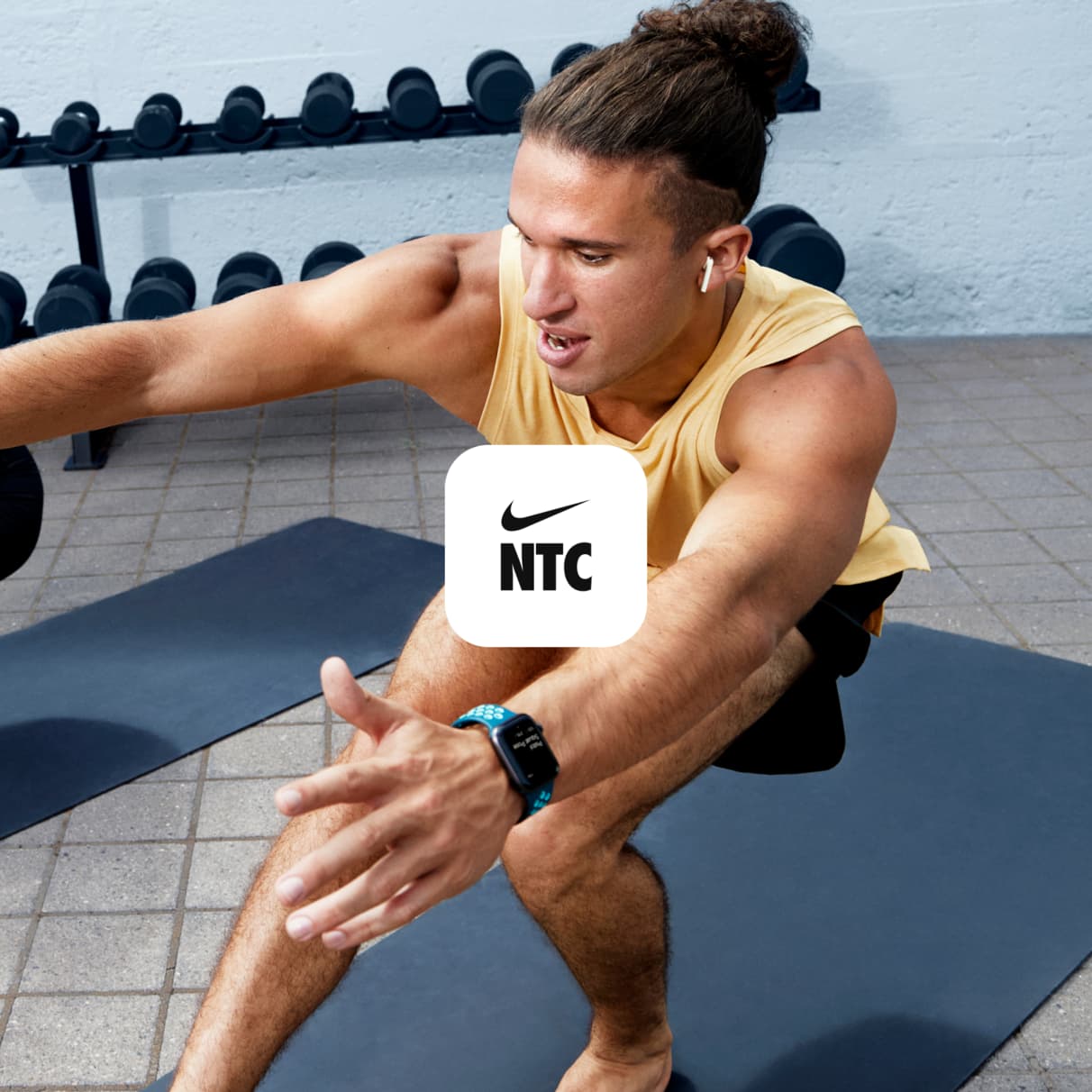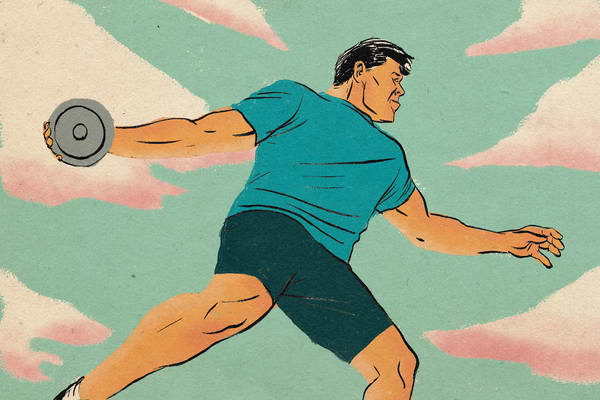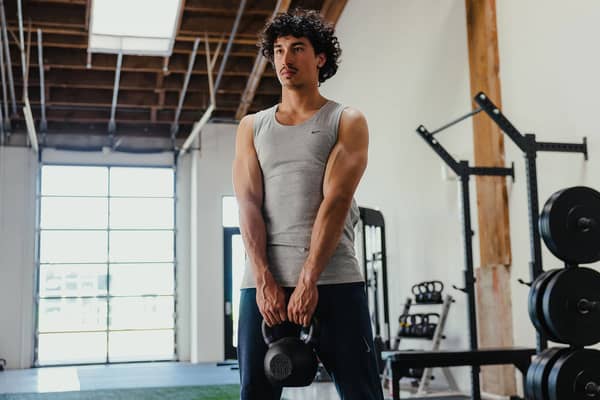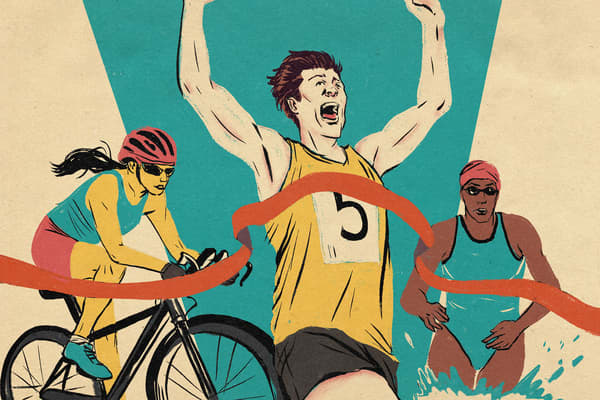5 exercises to improve posture, according to experts
Sport & activity
Perk up your posture with these expert-approved moves.

Experts agree that good posture is critical to back health. While reminding yourself to sit up straight and not slouch throughout the day is a great starting point, there are also many exercises that can help improve posture—and everyone can benefit from performing them.
"Our tissues and muscles adapt to the postures we put them through", said Darren Tomasso, Nike Well Collective Trainer, NASM-PES and USATF-certified running coach. "If we sit at our desk in front of a computer most of the day, our bodies are going to get really good at being in that position—shoulders rounded and shrugged, head jutting forwards, pelvis rotated [and] spine compressed".
He added that when physical posture changes, it can also cause muscular imbalances to develop. This can spur weakness in muscle groups, leading to a limited range of motion, and may even cause pain or discomfort when completing daily activities and workouts.
For these reasons, consider adding the below exercises for improved posture to your routine—each one targets different areas of the body, so be sure to do them all if you can.
5 exercises to improve posture
1.Diaphragmatic breathing
This is a modal window.
Sorry, your browser doesn't support embedded videos."Practising diaphragmatic breathing may help to improve posture", Jen Fraboni, DPT, said.
"Learning to breathe effectively through the low ribcage and diaphragm will assist in automatically stacking the shoulders over the pelvis without forcing the shoulders back or arching through the lower back", she said. "The lateral expansion of the low ribcage gently lifts the chest, while allowing you to sit in a more upright and relaxed position".
Focusing on breathing through the nose also switches the nervous system into a parasympathetic state, also called the "rest and relaxation" state. "This can help make you feel calmer", Fraboni explained.
To perform:
- Take slow, deep breaths in and out through the nose for two minutes, keeping your shoulders down.
- Some people also deal with tech neck, also known as forward head posture, resulting from looking at screens for long periods. Relax your neck to reduce tension in that area.
- The key to this movement is to feel your ribcage expand as you inhale.
2.Seated thoracic rotation
This is a modal window.
Sorry, your browser doesn't support embedded videos.The seated thoracic rotation exercise is another effective posture exercise.
"Improving thoracic, or upper back, rotation directly improves upper back extension", Fraboni said. "When we improve these two movements, we reduce that hunched over or rounded posture from sitting at a computer all day and help to naturally sit up taller just from a bit of movement". This is important, she added, because thoracic rotation couples with thoracic extension to help reverse a forward, flexed position of the spine.
To perform:
- Sit tall in a chair or cross-legged on the floor.
- Rotate your upper back to the right (sitting tall) as you reach your right arm towards the left side of your body as comfortably as possible, keeping it horizontal and parallel to the ground as you look back. Keep the other arm on your lap.
- Alternate sides slowly, inhaling as you rotate and exhaling as you switch sides.
3.Waiter pulls
This is a modal window.
Sorry, your browser doesn't support embedded videos.Tomasso said waiter pulls are one of the best posture exercises because they help stretch your chest and mobilise your shoulder muscles while training your upper back muscles (such as the latissimus dorsi, rhomboids and mid and lower trapezius) to squeeze back into a more upright posture.
Here's why: "As your elbows and hands move back, the pectoral muscles of your chest stretch and lengthen", he said. "Chest tightness is a contributing cause of rounded shoulder posture".
Plus, you can do waiter pulls seated or standing, making them a desk-friendly posture exercise to try in the middle of a workday.
To perform:
- Begin with your arms out in front of you. Keep your palms facing up.
- Next, bring your elbows to your side, creating a 90-degree angle.
- Rotate your arms away from each other while keeping your elbows close to your torso.
- Hold this position for two to five counts.
- Repeat for 60 seconds.
Not feeling it? "Imagine squeezing a pencil between your shoulder blades and pushing your chest ahead of you as you hold the position", Tomasso said. He also suggested holding a light resistance band in your hands if you want to increase the difficulty as you progress. To do so, take one end of a resistance band in each hand and pull your hands away from each other and back together again and repeat.
4.Seated pigeon stretch
This is a modal window.
Sorry, your browser doesn't support embedded videos.In addition to posture exercises targeting the upper body (think: shoulders and thoracic spine), Tomasso emphasised the importance of working on the lower body, specifically the hips, which contribute to improved posture. "[The seated pigeon stretch] is a great posture exercise because it stretches out the hip and lower back muscles that get tight from sitting on them during the work day", he said.
The seated pigeon stretch can help minimise any imbalances in the body, for example, if you typically favour crossing one leg over the other or leaning your hips to one side.
"This can create a slight imbalance where your hips shift upwards or downwards depending on the leg you favour when you cross over", he said. "Stretching the opposite hip over in this seated pigeon stretch can help even that out".
To perform:
- Sit in a chair. With your left leg planted on the floor, lift the right leg so that the right ankle rests on top of the left knee.
- Lean your torso forwards as far towards your shin as you can.
- Hold that position for about three to five seconds.
- Repeat on the other side.
"You should feel a release in your outer glute and lower back", Tomasso said.
5.Regular movement
This is a modal window.
Sorry, your browser doesn't support embedded videos.Lastly, Tomasso said an effective way to train the tissues in your back is to simply move your body more. In general, getting more movement in throughout the day can help to prevent muscle tightness and promote blood circulation.
"Just like you may need that daily cup of coffee to facilitate what you need to get done in a day, getting in smaller—but more frequent—bouts of movement can also keep you energised [and] focused", Tomasso said.
To implement this, he suggested taking short movement breaks throughout the day (ideally every hour), especially if you work at a desk for long periods. More specifically, sitting for an extended period of time can weaken hip muscles, which in part, negatively affects posture.
During these movement breaks, consider practising one or two of the above posture exercises, taking a brisk walk around the block, or walking up and down the stairs.
Words by Jessica Estrada





